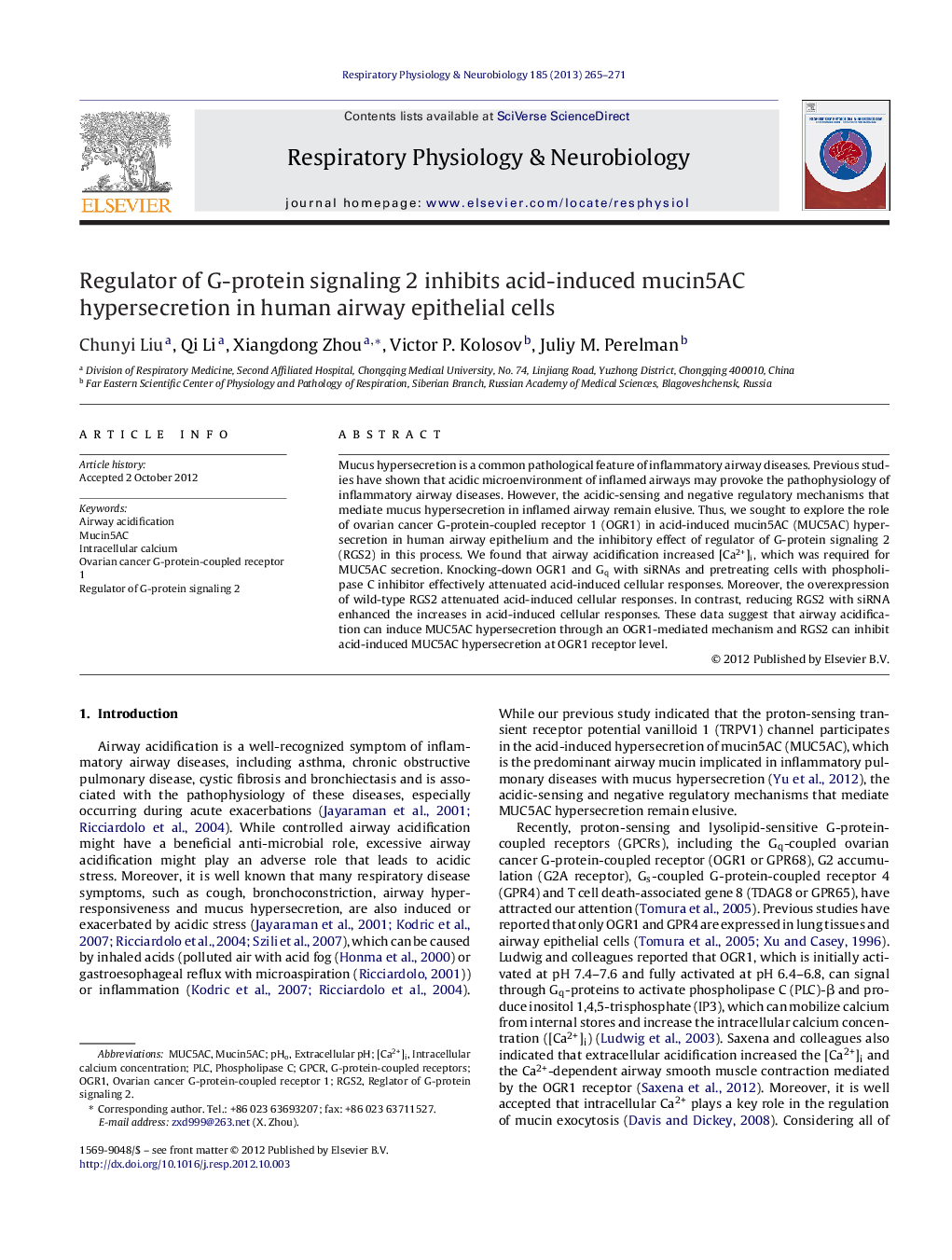| Article ID | Journal | Published Year | Pages | File Type |
|---|---|---|---|---|
| 2847279 | Respiratory Physiology & Neurobiology | 2013 | 7 Pages |
Mucus hypersecretion is a common pathological feature of inflammatory airway diseases. Previous studies have shown that acidic microenvironment of inflamed airways may provoke the pathophysiology of inflammatory airway diseases. However, the acidic-sensing and negative regulatory mechanisms that mediate mucus hypersecretion in inflamed airway remain elusive. Thus, we sought to explore the role of ovarian cancer G-protein-coupled receptor 1 (OGR1) in acid-induced mucin5AC (MUC5AC) hypersecretion in human airway epithelium and the inhibitory effect of regulator of G-protein signaling 2 (RGS2) in this process. We found that airway acidification increased [Ca2+]i, which was required for MUC5AC secretion. Knocking-down OGR1 and Gq with siRNAs and pretreating cells with phospholipase C inhibitor effectively attenuated acid-induced cellular responses. Moreover, the overexpression of wild-type RGS2 attenuated acid-induced cellular responses. In contrast, reducing RGS2 with siRNA enhanced the increases in acid-induced cellular responses. These data suggest that airway acidification can induce MUC5AC hypersecretion through an OGR1-mediated mechanism and RGS2 can inhibit acid-induced MUC5AC hypersecretion at OGR1 receptor level.
► Airway acidification is a well-recognized symptom in inflammatory airway diseases. ► MUC5AC is the major secreted mucin in inflammatory airway diseases. ► Airway acidification induces MUC5AC hypersecretion in human airway epithelia. ► The OGR1 receptor is involved in acid-induced MUC5AC hypersecretion. ► RGS2 inhibits acid-induced MUC5AC hypersecretion at the level of OGR1 receptor.
